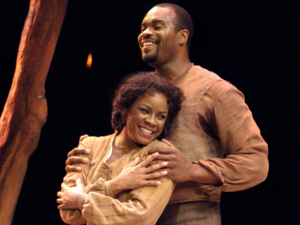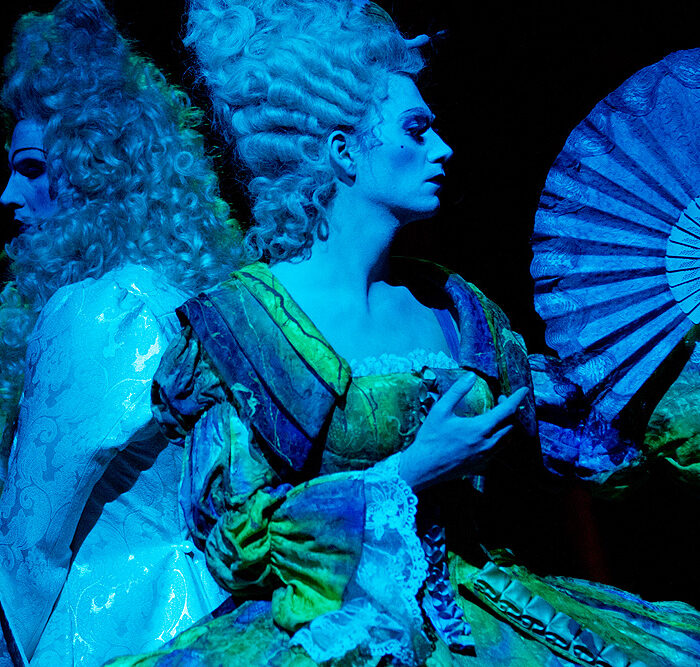
Opera Profile: The Real Story of Richard Danielpour’s ‘Margaret Garner’
By John VandevertSlavery and the lives forever changed by it are not easy things to talk about, much less put on the operatic stage. Yet, many composers like George Gershwin (Porgy and Bess), Rihannon Giddens (Omar), and Scott Joplin (Treemonisha) have all depicted the stories of real people that slavery sought to turn into buyable objects.
Yet, to this legacy there is one opera which recounts, much like Giddens’ discovery of the life of Omar ibn Said, the overlooked story of a woman who sacrificed her own child in her fight against the institution of slavery.
A co-commission by Detroit Opera, Cincinnati Opera and Opera Philadelphia, “Margaret Garner” is a harrowing look into the life of Margaret Garner, a woman who attempted to escape the bonds of slavery only to end up trapped for the remainder of her life. The two-act opera, a product of composer Richard Danielpour and Toni Morrison’s collaboration, depicts a fictionalized retelling of Garner’s life based upon Morrison’s own telling of her history in her 1987 book “Beloved.”
Beginning with Garner’s entrance into slavery in Kentucky to her tense attempts at escape and ultimate recapture, the opera concludes with her trial and fictionalized hanging, although in truth she died of typhoid in the late-1850s. Nevertheless, Danielpour and Morrison’s opera provides a window into the life and events surrounding Margaret and the lengths to which a mother would go to protect her own child from the horrors of slavery. Premiered on May 7, 2005 at Detroit Opera, featuring a cast of nearly 100 performers, the opera remains a distressing reminder of America’s historical past and the real people of slavery.
Margaret Garner’s Life Before
Born sometime in the first-half of the 19th-century, Margaret Garner was a woman between worlds. Described as possessing lighter skin, yet still being of a dark complexion, Garner is suspected to be an illegitimate child of her owner, U.S. politician John Pollard Gaines. She was born on his Maplewood plantation in Boone County, Kentucky, and had worked as a “house slave,” an enslaved person who works inside the plantation home and stays within the house as opposed to those who stay outside and work in the fields. Usually reserved for those with lighter skin, previous education, or some type of special skill, this “position” was considered a privileged class, usually being fed higher-quality food. In 1849, Margaret married Simon (Robert) Garner, a fellow enslaved person at the Maplewood plantation. Their son was born on 1850, explicitly black as described on the 1850 census.
Shortly after their marriage, the entirety of Gaines’ enslaved population were sold to Archibald K. Gaines (1808-1871) in the late 1840s after John was appointed Third Territorial Governor of Oregon by President Zachary Taylor. While under the ownership of Archibald Gaines, Robert and Margaret had their first child. However, of Margaret’s four children, three (Mary, Samuel, Priscilla), had lighter skin, much like Margaret. Because of this, it’s generally confirmed that Archibald had forced himself upon her which led her to conceive of them. Not much is known about the future of Robert and Margaret’s children other than Mary and Priscilla died, with the sons being raised by Robert until his death in 1871. Thomas Garner (1850-?) and Samuel Garner (1852-?) Both lived out their adult lives, Thomas living in Tennessee and Samuel living in Mississippi.
An Attempt at Freedom
During the latter-half of January 1856, a cold and icy time when the Ohio river freezes over, Margaret and Robert knew they needed to use this as their opportunity to escape. Thus, taking their entire family with them, they embarked on an all-hands-on-deck attempt to flee from their plantation to Storrs Township in Cincinnati, Ohio where slavery was illegal.
Outlawed in 1802 thanks to Ohio’s constitution, the state served as an important place of refuge for escaping slaves as part of the underground railroad. In a caravan of 17, having taken several horses and a “large sled,” they began making their way northward. The group took great pains to avoid detection, splitting up during the day. Eventually, they made their way to the residence of a man named Elijah Kite who had been purchased by his own father, Joe Kite. Elijah was also Margaret’s cousin. Once arriving, the families who had been coming with them continued north to Canada while the Garner family remained. This would later prove to be a critical error. Shortly after coming to their residence, their presence was spotted and later reported back to those who were looking for them in the south.
Before their capture, Kite had gone to Levi Coffin for help, an American quaker and avid abolitionist who’d helped numerous others. However, even with his help their capture couldn’t have been avoided. No longer than hours after Margaret’s family had arrived did slave catchers, assisted by U.S. marshals, come. Caught in a fire fight, they eventually arrested each and every one of the members. However, determined not to let her children become the victims of slavery, Margaret decided to end the lives of her children in hopes of alleviating their future suffering. Margaret took a knife and cut the throat of Mary, and attempted to kill herself and her other children but was stopped before succeeding.
As Coffin himself wrote in 1876,
“The fugitives were determined to fight, and to die, rather than to be taken back to slavery. Margaret, the mother of the four children, declared that she would kill herself and her children before she would return to bondage.”
The Trial and Later Life
Lasting two weeks, an exceedingly elongated amount of time considering most runaway slave trials were no more than a day, the “The Garner Fugitive Slave Case” proved to be a highly complex case.
The defense argued that she was liberated due to the laws of Ohio, with a murder rather than a fugitive trial being the most logical course of action. However, the prosecution argued that the fugitive charge was more powerful, and thus Margaret was to be tried. Many lines of defense were tried including John Jolliffe’s argument that slavery violated Margaret’s freedom of religion. A huge amount of people came to watch the proceedings each and every day, close to 1,000 people each day flocking to see the unfolding events. One speaker, anti-slavery activist Lucy Stone took to the stand to argue for Margaret’s right to her actions given the polemic of slavery. Ultimately, the judge ruled that Margaret was an enslaved person, legally, at the time of her arrest and thus was going to be treated like a slave regardless of the state that she was in at the time of her capture. The mixed-race of her child and herself proved another troubling element in the trial, as the child had been born out of Archibald Gaines’ infidelity.
After the trial, she was returned to Archibald, having evaded trial for murder. But, this was only because she was being moved around by Archibald. Robert and Margaret had been sent to New Orleans to work, later coming back to Mississippi after being purchased by Judge Dewitt Clinton Bonham. On March 6, 1856, while being transported via boat it crashed, leading to the suspicious death of Priscilla (then baby), with Margaret attempting suicide by drowning. However, this is just a myth as there is little evidence to this claim. Seeing as the boat had caught fire and sank quickly, she could have been thrown into the water.
Despite the many dangers, she remained alive until 1858 when a typhoid epidemic spread throughout Mississippi where she and Robert were enslaved along with her children. Ironically, Bonham too died of typhoid in 1861.
After her death, and the abolishment of slavery in 1865, it’s known that Robert died in 1871 due to a chest injury received at a ship yard during work. Robert had been interviewed in 1870 by the Cincinnati Daily Chronicle where he shared his experiences of joining the Union Army upon the dawning of the Civil War in 1861.
Listen
The article was updated on June 19, 2023 where key facts were updated thanks to external feedback.
Categories
Opera Wiki

